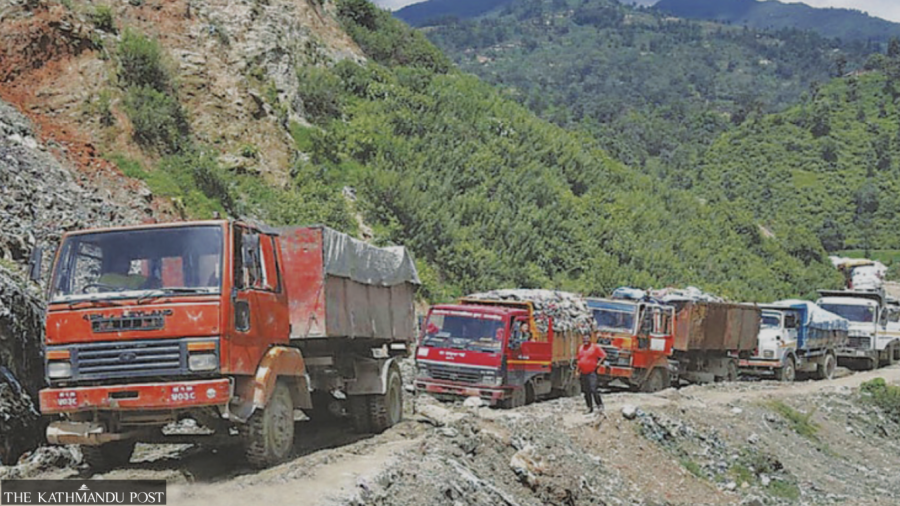Valley
KMC deploys heavy equipment to clear roads to Bancharedanda landfill
Newly bought high-pressure pumps will drain floodwaters from inundated settlements.
Arjun Poudel
In a bid to prevent garbage from piling up on streets during the monsoon, the Kathmandu Metropolitan City has deployed heavy equipment including bulldozers, excavators, and loaders, to clear the road to the landfill site. Officials said the move aims to ensure smooth transfer of waste as roads to the landfill often become impassable during the monsoon, preventing the passage of garbage trucks.
“We have deployed three excavators, two bulldozers and two loaders to clear landslide debris along the road to the Bancharedanda landfill,” said Rabinman Shrestha, chief of the Environment Department at the metropolis. “Also, we have kept five more vehicles on standby for immediate deployment if needed.”
Every year, during monsoon season, the road to landfill sites gets obstructed in multiple places, obstructing the transfer of house waste collected in the three districts of the capital city—Kathmandu, Lalitpur, and Bhaktapur. Apart from these, some local levels of Kavrepalanchok also discard garbage at the landfill site at Bancharedanda.
The metropolis officials said that they had purchased 10 high-pressure pumps to drain floodwaters from inundated settlements.
“Five pumps have already been sent to the high-risk areas along riversides,” said Shrestha. “These can quickly pump away floodwaters.”
The city office started repairing the Sisdole road leading to the Bancharedanda landfill in Nuwakot district just a few weeks before the start of the monsoon. Officials said Rs30 million had been allocated for repairs, which included fixing potholes, concreting roads, and other works.
Around 200 metres of road near the Sisdole area, which is often damaged by garbage trucks and excavators, will be concretised, according to officials.
Besides monsoon-induced road obstructions, garbage disposal is sometimes disrupted due to obstructions by the residents living in settlements near and around the landfill site. These obstructions cause weeks-long halt to door-to-door garbage collection, leading people in the Valley to discard their trash on streets.
Officials said that a high-pressure pump is being used to prevent the overflow of leachate from the dumping ground.
Landfill leachate is a hazardous liquid containing harmful bacteria, chemicals and other components. It forms when rainwater passes through a landfill or when organic matter decomposes naturally.
Officials say the leachate needs to be re-injected into the landfill, which quickens the decomposition process of the landfill waste and prevents the liquid from flowing into the river.
The City office has also started segregating degradable and bio-non-degradable waste materials from households in its seven wards. Wards 5, 7, 10, 12, 24 and 27 have been segregating the waste materials generated in the households. The city office has also arranged separate trucks for collecting segregated waste materials from the households.
Degradable waste materials are being turned into compost at the KMC’s waste transfer station. Officials said that the metropolis has also been using reagents to expedite the compost-making process.
The city office recently sold non-degradable waste worth Rs700,000.
Waste segregation at the source was one of the measures Mayor Balendra Shah touted as a solution to Kathmandu’s chronic garbage problem. After he assumed office, Shah asked city residents to start segregating waste at the source. They started doing so, using separate bins in their homes. But the plan didn’t work, largely due to a lack of preparations on the KMC’s part.
The Kathmandu Valley generates over 1,200 tonnes of solid waste every day, nearly 60 percent of which comes from the KMC alone. Experts say 60 percent of organic waste originating in the Valley can be converted into compost and the remaining 30 percent of non-degradable waste can be recycled.




 12.12°C Kathmandu
12.12°C Kathmandu











